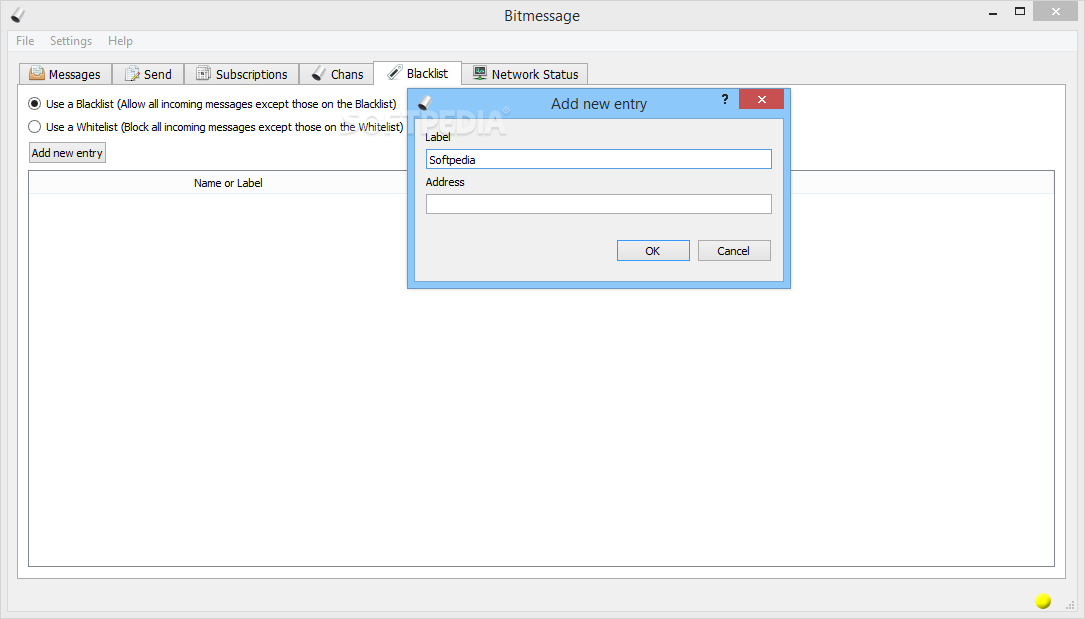

Contacts, Not Just For DifferenceĪt the time that Ethereum was being developed, there was a large amount of interest in allowing financial contracts on top of cryptocurrencies the basic type of contract being a “contract for difference”.
#BITMESSAGE PROTOCOL FULL#
Ethereum does not intend to be a Swiss Army knife protocol with hundreds of features to suit every need instead, Ethereum aims to be a superior foundational protocol, and allow other decentralized applications to build on top of it instead of Bitcoin, giving them more tools to work with and allowing them to gain the full benefits of Ethereum’s scalability and efficiency. A Mastercoin client then needs to search the Bitcoin blockchain for Mastercoin transactions in order to determine the current Mastercoin balance sheet.Īnd this is what Ethereum intends to fix. One can have two Mastercoin transactions, one sending 1 MSC and the other 100000 MSC, but from the point of view of a Bitcoin user that does not know how that Mastercoin protocol works they both look like small transactions sending 0.0006 BTC each the Mastercoin-specific metadata is encoded in the transaction outputs.


Mastercoin and Counterparty are somewhat more abstract they use the Bitcoin blockchain to store data, so a Mastercoin or Counterparty transaction is a Bitcoin transaction, but the protocols interpret the transactions in a completely different way. The protocol then tracks those bitcoins through the blockchain, and in that way it is possible to calculate who owns them at any time. First, in order to create colored coins, a user tags specific bitcoins as having a special meaning for example, if Bob is a gold issuer, he may wish to tag some set of bitcoins and say that each satoshi represents 0.1 grams of gold redeemable from him. The way the colored coins protocol works is simple. So far, the three main protocols that have followed this model are colored coins, Mastercoin and Counterparty. Now, a group of developers including myself have come up with a project that takes the opposite track: a cryptocurrency network that intends to be as generalized as possible, allowing anyone to create specialized applications on top for almost any purpose imaginable. However, up until this point all of the protocols that have been invented have been specialized, attempting to offer detailed feature sets targeted toward specific industries or applications usually financial in nature. More recently, we have seen the emergence of colored coins, allowing users to create their own currencies on the Bitcoin network, and more advanced protocols like Mastercoin, Bitshares and Counterparty which intend to provide features such as financial derivatives, savings wallets and decentralized exchange. The earliest implementation of this idea was Namecoin, a Bitcoin-like currency created in 2010 which would be used for decentralized domain name registration. Over the past year, there has been an increasingly large amount of discussion around so-called “Bitcoin 2.0″ protocols – alternative cryptographic networks that are inspired by Bitcoin, but which intend to make the underlying technology usable for far more than just currency. The author of this article, Vitalik Buterin, is also the founder of Ethereum, and this article is intended as an expository piece and not a review.


 0 kommentar(er)
0 kommentar(er)
